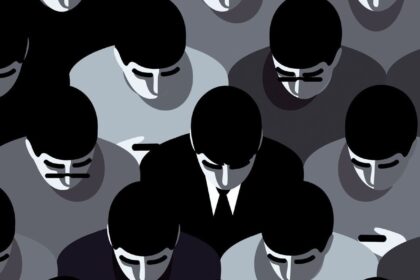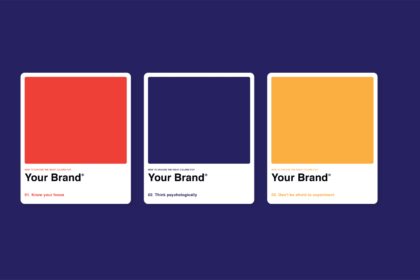Hate is no longer just a reputational threat, it is a marketing opportunity. In today’s hyperconnected digital world, when critics attack a brand online, their words often spread faster than the brand’s own paid campaigns. Yet, some companies have learned to turn this negativity into free, viral advertising. From controversial product launches to bold social media clapbacks, brands are increasingly embracing criticism as a stage to showcase personality, win loyalty, and amplify reach without spending millions on ads. This article explores how businesses are strategically transforming hostility into attention, and attention into growth.

The New Era of Controversy Marketing
Why Hate Spreads Faster Than Love
Social psychologists have long noted that negative emotions trigger more engagement than positive ones. A 2023 MIT study on online virality found that posts containing outrage were 70% more likely to be shared than neutral ones. For brands, this means criticism isn’t just noise, it’s fuel.
Marketers call this “controversy marketing”: when opposition magnifies awareness. In a fragmented attention economy, outrage can act as an unpaid media amplifier, reaching audiences traditional ads struggle to capture.
The Risk-Reward Equation
Not every brand can afford to lean into hate. Luxury labels like Balenciaga or edgy food brands like Liquid Death thrive on provocation, while financial institutions or healthcare firms risk losing trust. The key lies in authenticity: if the controversy aligns with the brand’s core identity, backlash can translate into loyalty.
Case Study: Nike and Colin Kaepernick
When Nike featured NFL quarterback Colin Kaepernick in its 2018 campaign with the tagline “Believe in something, even if it means sacrificing everything,” critics burned sneakers in protest. Yet Nike’s online sales jumped 31% in the days following the ad launch (Edison Trends).
The brand didn’t fight the hate it showcased it. Viral videos of consumers destroying products ironically doubled as unpaid advertising, reinforcing Nike’s message of courage and conviction. The backlash became proof of authenticity, turning detractors into amplifiers.
How Social Media Clapbacks Became Marketing Gold
Wendy’s: From Fast Food to Fast Jabs
Wendy’s Twitter account is now legendary for witty takedowns. Instead of ignoring trolls, the brand embraces playful insults, often going viral. One notable exchange in 2020 with a rival fan account generated millions of impressions, far surpassing any paid campaign.
This strategy works because it feels human. Consumers no longer trust corporate-speak; they crave personality. A well-timed clapback transforms negativity into community entertainment, which strengthens brand loyalty.
The Memetic Advantage
Hate often creates memes, and memes extend life cycles of brand campaigns. For instance, when Tesla’s Cybertruck window shattered onstage in 2019, critics mocked the “indestructible” glass failure. The memes spread globally, yet Tesla received over 250,000 preorders within a week. The mockery became free advertising.
When Brands Intentionally Court Hate
Liquid Death: Selling “Murder Water”
The canned water startup Liquid Death leaned fully into a provocative name and heavy metal branding. Critics labeled it gimmicky, even dangerous for kids. But the backlash fueled curiosity. By 2024, Liquid Death reached a $1.4 billion valuation and became one of the fastest-growing beverage brands in the U.S.
The strategy was simple: hate attracts attention, attention drives trial, and trial converts skeptics into loyalists.
Balenciaga’s Shock Marketing
Balenciaga repeatedly courts outrage, from $1,800 “destroyed sneakers” to runway shows in mud pits. Critics accuse the brand of being out of touch, but every scandal secures headlines in top-tier outlets, essentially giving the brand global ad coverage for free.
The Psychology Behind Turning Hate Into Ads
Negativity Bias
Humans are hardwired to pay more attention to negative events. Brands that understand this use criticism as a spotlight.
Tribal Identity
Backlash often rallies supporters. When critics attack, loyal fans defend. Nike’s Kaepernick ad didn’t just anger some, it deepened connections with core audiences who felt represented.
The Reversal Principle
In marketing psychology, the reversal principle suggests that opposition can validate a brand’s position. If a brand says it stands for boldness, critics reinforce that claim by reacting negatively.
Lessons for Entrepreneurs and Global Brands
- Align with Core Values: Backlash only works if the controversy reinforces brand identity. Nike could embrace Kaepernick because social justice aligns with its ethos of athlete empowerment.
- Embrace Transparency: If the criticism is about product flaws, acknowledgment and humor (like KFC’s famous “FCK” bucket apology in the UK) can turn disaster into goodwill.
- Know Your Audience: Younger consumers reward authenticity and risk-taking. Older demographics may view controversy as unprofessional.
- Convert Criticism Into Content: Showcase hate creatively, Spotify famously turned user complaints into billboard ads with tongue-in-cheek humor.
- Don’t Fake Outrage: Manufactured scandals are easy to spot and can erode trust. The power of hate-as-marketing lies in its authenticity.

Conclusion: From Critics to Unpaid Ambassadors
In an age where attention is currency, hate is no longer a liability, it is leverage. The most successful brands don’t silence their critics; they spotlight them. From Nike to Liquid Death, companies are proving that outrage can be monetized, memes can sell products, and criticism can create communities.
For entrepreneurs, the takeaway is clear: you don’t need everyone to love your brand. In fact, being loved by some and hated by others may be the most powerful and cost-effective advertising strategy of all.






